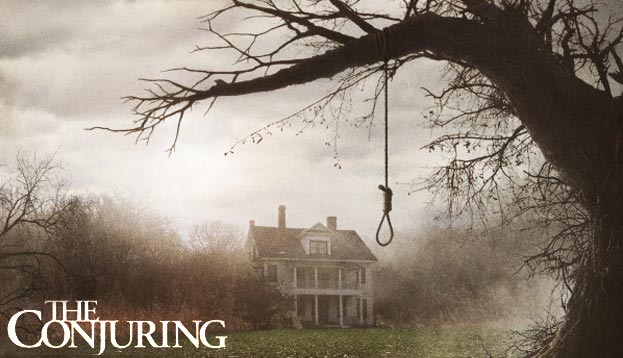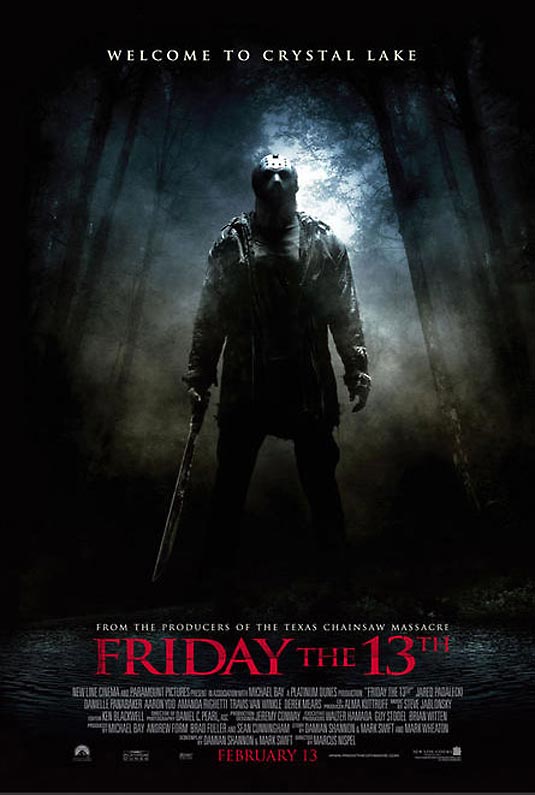

James Wan's The Conjuring hits theaters tomorrow and I could not be more excited. Wan has been severely underrated for years now, through some fault of his own. His debut film, Saw, is a masterful piece of suspenseful filmmaking, but most people only remember it as the film that spawned 48 sequels (slight hyperbole). Dead Silence and Insidious were both effectively creepy and atmospheric movies but suffered from flimsy third acts. Death Sentence...well let's just forget about Death Sentence. With initial reviews skewing towards the overwhelmingly positive for The Conjuring, it looks like Wan may finally get recognized as a top-tier horror director.
So what does Wan do right in almost all of his movies? More importantly, what do so many horror directors get wrong in their movies? Here's a list of the mistakes that directors and writers make when trying craft a good scare.
We've been seeing this more and more nowadays, particularly with the perennial Halloween franchise Paranormal Activity. The "scares" of those films are entirely surprise-based, meaning they lull you to sleep with inactivity and then LOUD NOISES happen while something jumps up on-screen. There are ways to make this technique scary, but the way it's used in Paranormal Activity is better described as "startling". If you create an unsettling atmosphere and use jump-scares as a payoff, then it can be accurately described as scary. But leaving the camera stationary for 30 seconds and then suddenly causing a cacophony is just startling. The same effect can be achieved by Youtube videos that last 30 seconds, so why are people wasting almost two hours and a ticket fee for the experience?
True scariness is something that crawls its' way under your skin and stays there for hours, possibly even days after you see the film. Jaws came out in 1975, and there are still people who are afraid to go into the ocean today. Jump-scares don't stay with you after the fact because there's no substance behind them. A slowly creaking door is infinitely more terrifying than sudden explosions of activity.
This happens most often in established horror franchises such as Saw, Final Destination, Friday the 13th, Nightmare on Elm Street, etc. The further into a series you get the more it becomes about "the kill" and less about the characters. When creative forces should be aimed at renewing the story, they are instead used up on concocting the most outrageous way to kill someone as possible. These filmmakers have lost sight of what makes a horror movie great: NOT wanting to see the characters die.
Much of the fear that comes from horror films is grounded in our ability to empathize with the victimized characters. The better job the writer does at creating a relatable protagonist, the more likely we are to feel their anxiety/fear/frustration/etc. There is an ephemeral thrill in watching someone have their face iron-maidened, but it doesn't hold a candle to experiencing every second of a character's psychological torment. Stanley Kubrick's The Shining features only a single on-screen murder in over two hours, and it's considered one of the greatest horror movies of all time. Why? Because it's about more than just death. It's about a family falling apart due to an alcoholic father. It's a slow descent into madness, not a body-count record breaker.

Hollywood catches a lot of flak from critics and audiences (including me) for not being original enough. The sad fact of the matter is almost everything has been done already and true originality is hard to come by. When it comes to thinking of an evil force to terrorize a horror movie, it's easier to just piggy-back onto an old baddie than create a brand new one. Easier - and boring. When you start making sequels and remakes of popular horror franchises, audiences already know what they're dealing with. Half of the fun in a scary movie is discovering the source of evil. But when you watch a series with an established villain, you already know who the culprit is (it's Freddy/Jason/Michael/Old Man Jenkins in a mask). This takes all the mystery out of the experience and makes it all rather boring.
Let's say you can come up with a marginally unique villain; Now the most important job a director has is to not give away the villain's identity too early. Once again referring to Jaws, the brilliance of the film comes from Steven Spielberg's endless teasing of the shark's image and the phenomenal reveal of it halfway through the film. We know all along that the menace is a shark, but it's reveal is still frightening because it has been built up so flawlessly. Unless you're going to make a brilliant satire of the genre like Cabin in the Woods, it pays to keep the audience in the dark for a while. But be warned: there's a difference between keeping a secret and duping your audience.
This seems almost too obvious as it applies to every genre of film, but horror movies often don't put much effort into casting. Most scary movie casts are comprised of young women with perky breasts and young men with six-pack abs. Often a popular star from television will be the lead role in an attempt to cash in on that fandom flocking to the theater (i.e. Jared Padalecki headlined the Friday the 13th reboot in order to bring in the Supernatural audience). Of course, these castings are reliant on hackneyed screenplays that focus on young people being terrorized, but it is possible to cast a youthful actor because of their talent, not their physical attributes.
Casting a good actor could be the difference between feeling sympathy for a character and being completely disinterested in one. Hollywood seems to think that we won't care about a character unless they are in our age group and wearing as little clothing as possible. But if you cast a good enough actor (and hire a writer that isn't afraid to, you know, write characters with some depth), audiences will care about anyone. In 28 Days Later, when Brendan Gleeson's character Frank becomes infected, we all feel the impact of it. Gleeson is such a kind, welcoming presence that we can't help but feel attached to him. He accomplishes this despite being 47 years old and not looking like an Abercrombie & Fitch model.

Tweet me @NicksMovies or @StageBuddy and let me know what YOU think horror movies get wrong.